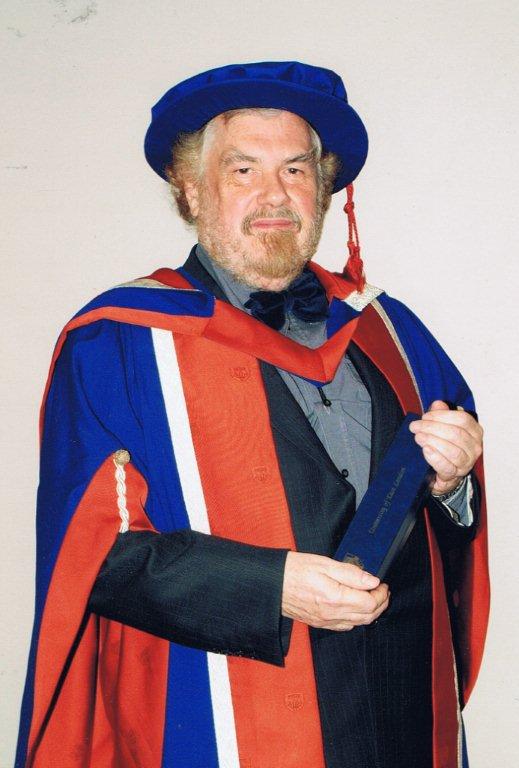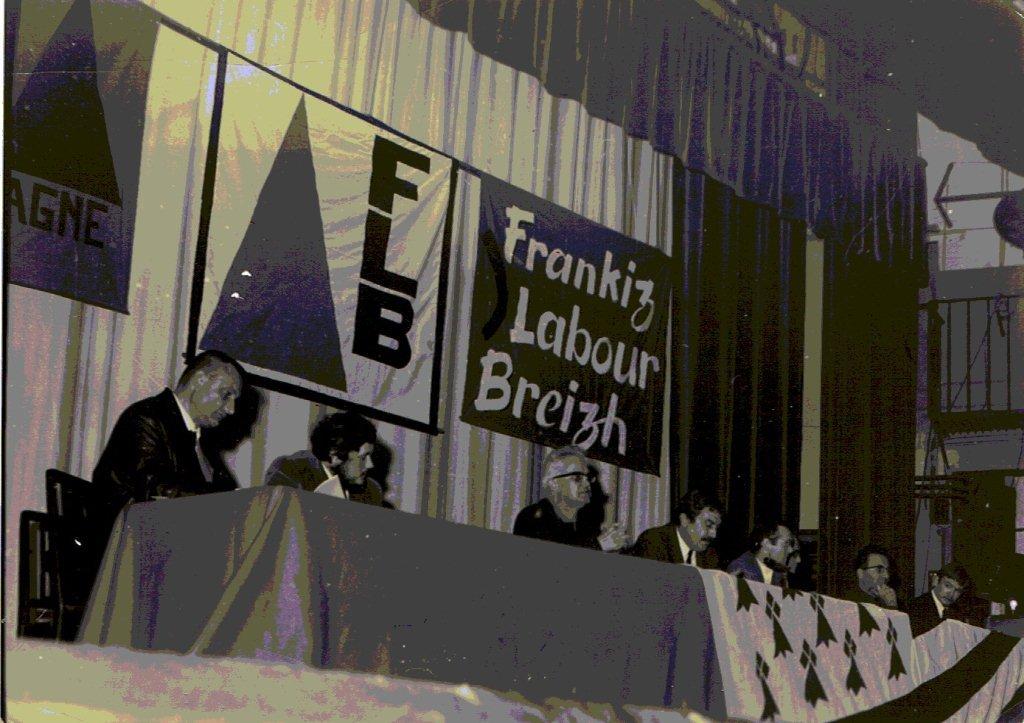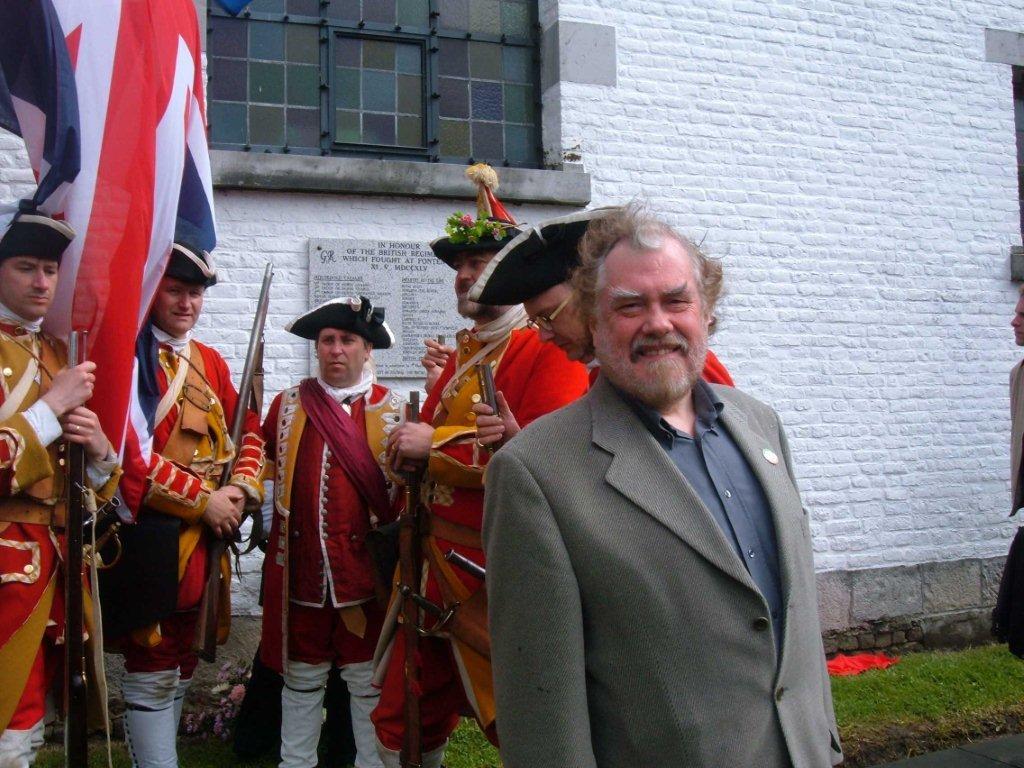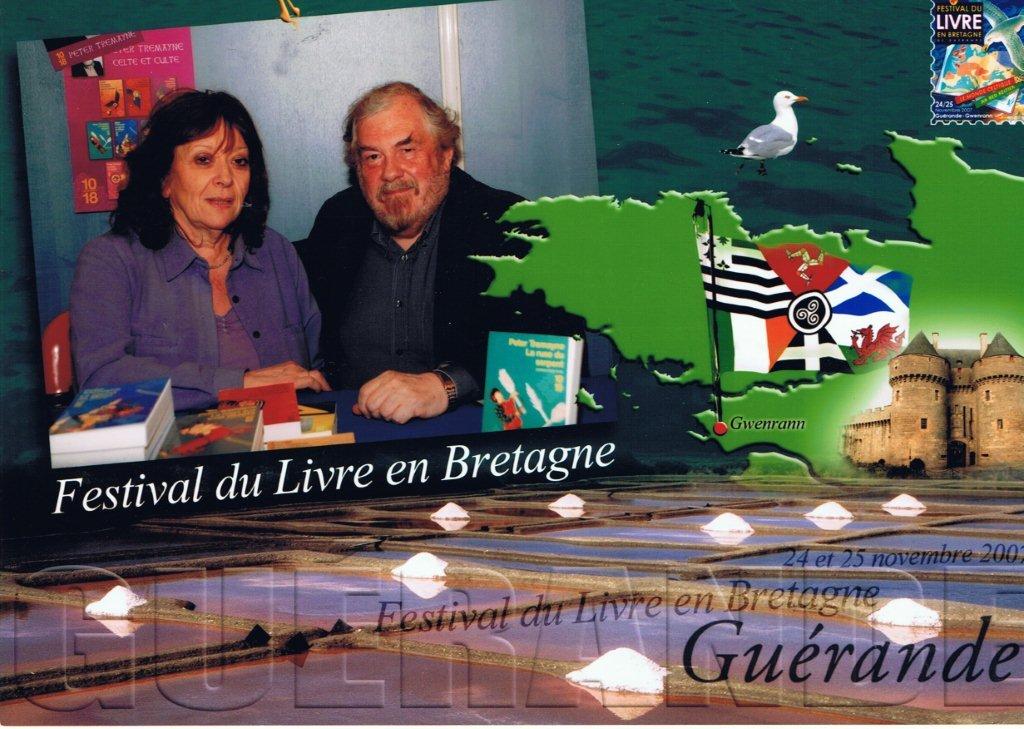Interview with Peter Berresford Ellis
By popular demand we have re-featured this exclusive interview with Peter Berresford Ellis, originally published on January 29, 2013.
Transceltic are delighted to interview Peter Berresford Ellis, the well renowed Celtic historian and author of the international bestselling Sister Fidelma historical mysteries under his pseudonym of Peter Tremayne. We put the following questions to Peter:

1. How do you see the future of the Celtic languages?
In spite of the achievements of the last decades, there is no room for complacency when examining the current situation and looking to the future. Coming from the 1960s perspective when Welshmen and women were going to jail in their campaign to gain status for Welsh; when the Cornish who proclaimed their Celticity were sneered at as fantasists dreaming of the second coming of King Arthur; when Scottish Gaelic speakers could not even register their children in the language … well – times have moved on. Since the 1960s there has been some legal recognition given to the Celtic languages and through this there is a more widespread knowledge of the languages and their historic, cultural and social value. But the fact remains, they are still endangered languages. Look at recent Census figures for Welsh as an example. There is no easy acceptable programme to ensure their salvation. It comes down to hard work – we must publicise, educate and encourage. There is a pithy saying in each of the six Celtic languages – no language, no nation!
2. What do you see as the future of the Pan Celtic movement?
Pan Celticism has its roots in the history of the Celtic peoples – links that can be identified even if, at the time, they were not articulated as a common identity. Remember how the Romans were aware of this? They asked the Celts of southern Gaul to contact the Celts of Galatia (modern central Turkey) to persuade them not to support Hannibal. But as a specific cultural movement linking the different Celtic peoples, this did not start until the 19th Century and (ironically) in the wake of the publication of a book by the Breton language poet Charles de Gaulle (1837-1880) the uncle of General de Gaulle.
In my book The Celtic Dawn: A History of Pan Celticism, I have shown that through the 20th Century the Pan Celticism progressed through several movements until, in 1961, The Celtic League came into being which has been the most resilient and political of these movements. The Celtic League has achieved much in developing the links and consciousness between the Celtic peoples. When they started out, only the Irish and Manx had any form of self-government. Wales and Scotland have now joined them. Bodies like the Celtic League must continue in its educational endeavours trying to get the government bodies in the Celtic countries to take steps to formalise links between them. This cooperation can be done in all fields – cultural fields, economic fields and so on.

3. In your 1993 work The Celtic Dawn: A History of Pan Celticism you discuss the subject of ‘Who is a Celt’. Do you see Celtic identity going beyond that of language?
Celtic is a linguistic term; a Celt is one who speaks or was known to have spoken within modern historical times a Celtic language. That is central. The definition is certainly not a racial term. This brings us back to the future of the languages for if the languages and their attendant culture have no future then the Celts will become as extinct as the Etruscans. I was instrumental in persuading the Celtic League to reject an application from Galicia (Spain) as a Celtic country! The last time a Celtic language is recorded as being spoken in Galicia was in the 9th Century. The language now spoken there (Galego) is an Hispanic dialect, close to Portuguese but influenced by Castilian. True, there are some Celtic words remaining. However, more Celtic words remain in French and, indeed, English. Indeed, Celtic was recorded in Cumbria in England as late as the 14th Century and even in the 20th if one accepts the evidence of shepherds using Celtic prime numbers to count their sheep. So on the basis of accepting Galicia, the Celtic League would have to accept France, England (or at least Cumbria) as legitimate Celtic communities.
To reject the language and culture of the people is, as Thomas Davis declared, to set their history adrift, create a gulf that separates people from knowledge of their history and thousands of years of cultural and historic development.
If we try to define Celtic by any other means than language and culture we would have to deny many great outstanding Celtic figures because they were descendants of migrants into the Celtic world who adopted the nationality of the country. Where would we stop? Pádraic Pearse, executed in 1916, was the son of an Englishman. He was also a Pan-Celt. Would he be excluded? And do we have to exclude people called Joyce, Burke and countless others who are of Norman origin? In the 1960s one of the active members of the Celtic League was the Irish language poet Caitlin Maude (1941-1981) but the original Maude’s were an aristocratic English family who settled in Ireland in the 17th century whose descendants wound up among the Irish speaking peoples of Connemara. And what of such people as David Marcus, one of the great Irish scholars, or Robert Briscoe, who fought in the Irish War of Independence with many other sons and daughters of Jewish emigrants who took Celtic culture and the cause of independence to their hearts? Celtic identity is intrinsically linked to language and culture and there can be no dilution of that fact.
4. Can you comment on the role played by the Druids in pre-Christian culture and do you see the modern Druidical movement as legitimate heirs to the historical Druids?
The Druids were the intellectual caste of pre Christian Celtic society. They comprised all the professions – doctors, lawyers, teachers, philosophers, ambassadors and so on. While religion did come into their orbit, they were not simply (as popular misconception has it) a bizarre sect of pagan priests. I clearly set out the scope of their role in pre Christian Celtic Society in my study The Druids (1994). In that same study, in the last chapter, I also showed how, specifically from the 17th Century, the Druids were reinvented by ‘gentlemen antiquarians’ who really did not know much about early Celtic society. They grafted their own ideas on the references made by Classical writers who often misinterpreted what they dismissed as a ‘barbaric’ culture. Indeed, many references were clearly Roman propaganda to denigrate the people they were intent on conquering. I have gone into some details of the reality there in my study Celt and Roman: The Celts in Italy (Constable, 1998) which examined the origins of the antagonism between the two people.
Iolo Morganwg (Edward Williams, 1747-1846) can be acknowledged as a founder of neo-Druidism, as well as launching the Gorsedd (Gorsedd Beirdd Ynys Prydain) in 1792. Alas, he was guilty of some bizarre ideas. Although the Gorseddau now has their own traditions and can be accepted as a valid part of modern Welsh, Breton and Cornish culture, the neo-Druidism of his invention is based on a lot of misinformation. The modern Druidical movement, with their confusion between Anglo-Saxon pagan concepts and more recent esoteric inventions, gathering at non-Celtic megaliths, are not in anyway part of the original intellectual caste of Celtic society. I doubt whether most of those who claim to be Druids today would recognise a genuine Celt if they ever met.
One of the most peculiar inventions of the modern movement has been the famous ‘Tree Zodiac’ inspired by Robert Graves The White Goddess. A concept that has caused many a Celtic scholar to collapse in laughter over it. Back in 1997, as a result of a challenge on this, I attempted to show how many modern ‘Druids’ were misled by Graves and his lack of knowledge in a paper 'The Fabrication of 'Celtic' Astrology' (The Astrological Journal, Vol 39, No 4).

5. How significant were the Brehon Laws in forming Celtic Culture?
We should reverse question as it was Celtic Culture which produced the Brehon Law system. Technically, they were the Laws of the Fenechus (laws of the tillers of the land), which we call Brehon Law, from the use of the word breitheamh (a judge). That there was a similar law system across the Celtic world can be seen by comparisons with the Laws of Hywel Dda codified in Wales in the 9th Century. Professor John Cameron, in his 1937 study Celtic Law, pointed out the traces of an early Celtic system of law in Scotland which had been submerged after the rise of the Normans there. Even Gildas in his reference to the Molmutine Laws of Celtic Britain, references seized upon by Iolo Morganwg, show concepts linking to known Celtic systems. Then, of course, we have recent discoveries like the legal Celtic text on a bonze tablet recently found in Botoritta near Saragossa. And there are traces of law references in 16th Century Breton documents. All of which point to the Celts having a fairly common legal system.
Being an Indo-European people, there are similarities to the Hindu Laws of Manu. Professor Myles Dillon (1900-1972) of University College, Dublin, used to urge his students, studying Old and Middle Irish, to also study Sanskrit. I found his Osborn Bergin Memorial Lecture ‘Celt and Hindu’ truly inspiring. But his greatest work was his book Celts and Aryans: Survivals of Indo-European Speech and Society, published by the Indian Institute for Advance Study, in Simla 1975. Sadly published after his death, this was a truly exciting study and one that showed the ancient cultural importance of the Celtic languages while, at the same time, showing how nonsensical any pseudo ‘racial’ definition of the Celts.
But to return to the intent of the question; the first known to be codified of the Brehon Laws, that is a written form, was in AD 438 when the High King Laoghaire (AD 428-465) set up a nine man commission to study the existing Irish law system and remove anything which would be contrary to the new Faith (Christianity). Laoghaire sat on this commission with two important provincial kings (Munster and Ulster); with three leading judges (Brehons) and three leading churchmen, of which St Patrick was one. This we can correct the idea that it was Patrick alone who caused the Irish to set down their laws. Moreover, the law system already existed as chroniclers refer to Ollamh Fodhla, a High King in the 8th century BC, as ordering a compilation of the Irish laws. Quibble as one might on this point, it is obvious that the Brehon Laws, when Patrick arrived, were an ancient, sophisticated legal system, developed over many centuries, and their comparison with the Hindu Laws of Manu from the common Indo-European parent reinforces the argument that the Celts had separated from the common Indo-European parent around 2000 BC, perhaps earlier. So in having such as fascinating codified system, surviving despite colonial ravages, we have what could be claimed as northern Europe’s oldest legal system.

6. Can you comment on the phenomenal success of the Sister Fidelma series and share with us how your knowledge of the Brehon Laws served as an inspiration?
I find the success of the Sister Fidelma Mysteries almost inexplicable. I was giving some lectures in St Michael’s College, Toronto University in the 1980s on Brehon Law, the role of women and the differences between Rome and the Celtic churches in the 7th Century. A student, who knew I also wrote fiction, suggested, in the wake of the popularity of Umberto Eco’s Name of the Rose, that this would make a good background. It was not until 1993 that I wrote some short stories featuring Sister Fidelma, who was a trained advocate of the Brehon law system, and had to solve her mysteries under that system. When the stories appeared, a publisher asked me if I extend the stories into a novel length form. I did so and the first novel was published in 1994.
Since then, the success has amazed me. In 2013 the 24th title in the series will be published. The stories have appeared in 18 different languages, issued on audio books in the UK and Germany; been dramatised on German radio, and was optioned by a Dublin company for developing for television although these rights have now been reverted by me. In 2013 the first graphic novel edition will be published in several languages.
A sad note for me is, of the Celtic languages, only Breton has taken the Fidelma books to heart with two full novels published and half a dozen short stories. There are plans in Brittany to produce two more titles, another novel and a volume of short stories. There was one short story in Irish produced in pamphlet form which was produced by the Irish members of the International Sister Fidelma Society.
What has given me satisfaction is the foundation of the Féile Fidelma, a three day gathering of Fidelma fans from all over the world, in Cashel, Co. Tipperary, which is where Sister Fidelma is based as she is the sister of the King of Muman (Munster). This was established in 2006 and the Féile has had many distinguished academic speakers talking about the cultural and historical background of these stories. Professor Dáibhí Ó Cróinín, Professor Pádraig Ó Riain, Professor Mairín Ní Dhonnchadha, Dr Andrew Breeze, Dr Dagmar O’Riain-Raedal, Dr Dan MacCarthy, Professor Cormac Ó Cuilleanáin, Dr John Scaggs, Anna Heussaff and many others. This has really been a source of opening the Celtic world to the rest of the world.
Of course, the real 'icing on the cake' would be if the Sister Fidelma series eventually translated to television or film.

7. Apart from language, what do you see as the most important role for Celtic activists to play in the future?
Education. In the 1990s, as devolution was becoming a reality in Scotland and Wales, and debates were progressing across the Celtic world, a curious movement started led by Dr Simon James, an academic who had previously been happy to write books about the ancient Celtic peoples. A school emerged who wanted to wipe the Celts from history. In 1987, James began to argue that the ancient Celts did not exist and Celtic was a modern concept. He wrote a confusing book entitled The Atlantic Celts: Ancient People or Modern Invention (1999). I was invited by The Independent (London) to contribute an article (January 5, 1999) 'Did the ancient Celts really exist?'. This led to The Scotsman inviting me to debate with James (March 27, 1999) and this led to a further debate on BBC Radio 3.
Actually the main argument was simple. Dr James claimed the ancient Celts did not exist because they never called themselves 'Celts'. Although loath to quote Julius Caesar as an expert, I had to point out a quote from his Gallic Wars, Qui ipsorum lingua Celtae, nostra Galli appellantur – in their own language they are called Celts, in our tongue Gauls. But how do we know Celtic was spoken in Britain? – cried Dr James. Well, Celtic place names might help, and the Celt names impressed on the coins minted in southern Britain centuries before the Roman invasion? Dr James would have done of it.
The point that I am making is that today there is still much propaganda and misinformation about the Celts and it is a prime task to correct this and educate people. What misinformation?
The Celts were illiterate. Really? We have some 500 pieces of textural evidence from the 5th to 1st Centuries BC in Continental Celtic languages. And, of course, many Celts wrote in the language of their conquerors as they do today. Caecilius Statius, Rome’s leading comic dramatist, was not a Roman. He was an Insubrean Celtic warrior who was captured at the battle of Telamon in 225 BC and taken as a slave to Rome. He learnt Latin, earned his freedom and now is thought of as just another Roman. And he was not alone as Professor David Rankin pointed out in his book Celts and the Classical World (1987).
The Celts never built towns. Yes, they did. The Romans built over many of them but thankfully they ignored others such as Manching, built around 600 BC as the capital of the Vindelici. The Romans conquered and drove out the Celtic inhabitants in AD 15 and it was deserted and forgotten. Archaeologists have discovered its stone walls contained 380 hectares – a five mile circumference with walls 5 metres high. The population was estimated to be 10,000 living in stone built houses often two storeys high, shops, storage, artisans etc. minting their own coins. Streets set out on rectangular grids on an east-west, north-south basis. Thankfully, its rediscovery has led to amazing finds.
The Celts didn't build roads. Oh yes, they did. Apart from the fact that a high proportion of words for transport in pre-empire Latin are actually Celtic loan words, archaeologists have been finding stretches of Celtic roads. It was often pointed out that Caesar’s account of Celtic ability to manoeuvre great war chariots against his legions in southern Britain meant they had a system of roadways as such vehicles would be bogged down in fields and marshes. The Celts built of local materials, wood, which were then mostly overlaid by Roman stone after the conquests. The sophistication of Celtic roads was highlighted by Professor Barry Raftery's discovery in the 1980s of the stretch of road, dated around 150 BC in the Corlea bog in Co, Longford. It had been preserved by the bog. This makes sense of the strict Brehon Laws on the construction and maintenance of roads and transport.
The Celts only used barter as they did not know about money. Indeed? The Celtic world had started to mint their own coins at least around the same time as the Romans. Even in Britain the Celtic kings were producing gold and silver coins from the 4th Century BC. Wonderful hoards of Celtic coins have been found across the Celtic world and many stamped with the names of the Celtic rulers.
The Celts only built hut-like houses of wood and wattle? Really? Ever visited the brochs? Carloway, Mousa, Dun Telve etc. built long before the Romans turned their eyes northward? Ever seen Chysauster in Cornwall, eight stone houses dating from the 1st Century BC and with under floor drainage? Ever wandered by Dun Aengus, the great stone fort, or the fabulous Staigue Fort in Kerry dating from at least the 1st Century BC whose walls still stand 13 ft high enclosing a space of 88 ft in diameter?
And that is just a start for the sneers and propaganda is numerous and it has to be countered. As someone said to me recently: 'What's the point of the Irish language? It's not much use. It doesn’t even have a word for telephone!' To which I replied: 'Tell me the English word for telephone then.' Alas, they didn’t understand the point until I explained it. But that is the level that we have to put up with. The ancient Celts had a dynamic and fascinating European wide civilization before it began to be constrained by the military machine of Rome into these western reaches of Europe. The Celts did exist and they still do; so it is up to the present generations to educate and correct the continuing propaganda levelled at them. That has been the task I set myself fifty years ago and it is still a task that needs to be carried on.
To accompany his interview, Peter provided this biography of himself.
"Dictionary of Celtic Mythology" by Peter Berresford Ellis
Get your copy from Amazon.com(US$) or Amazon.co.uk(GB£):
- Pan-Celtic
- English





